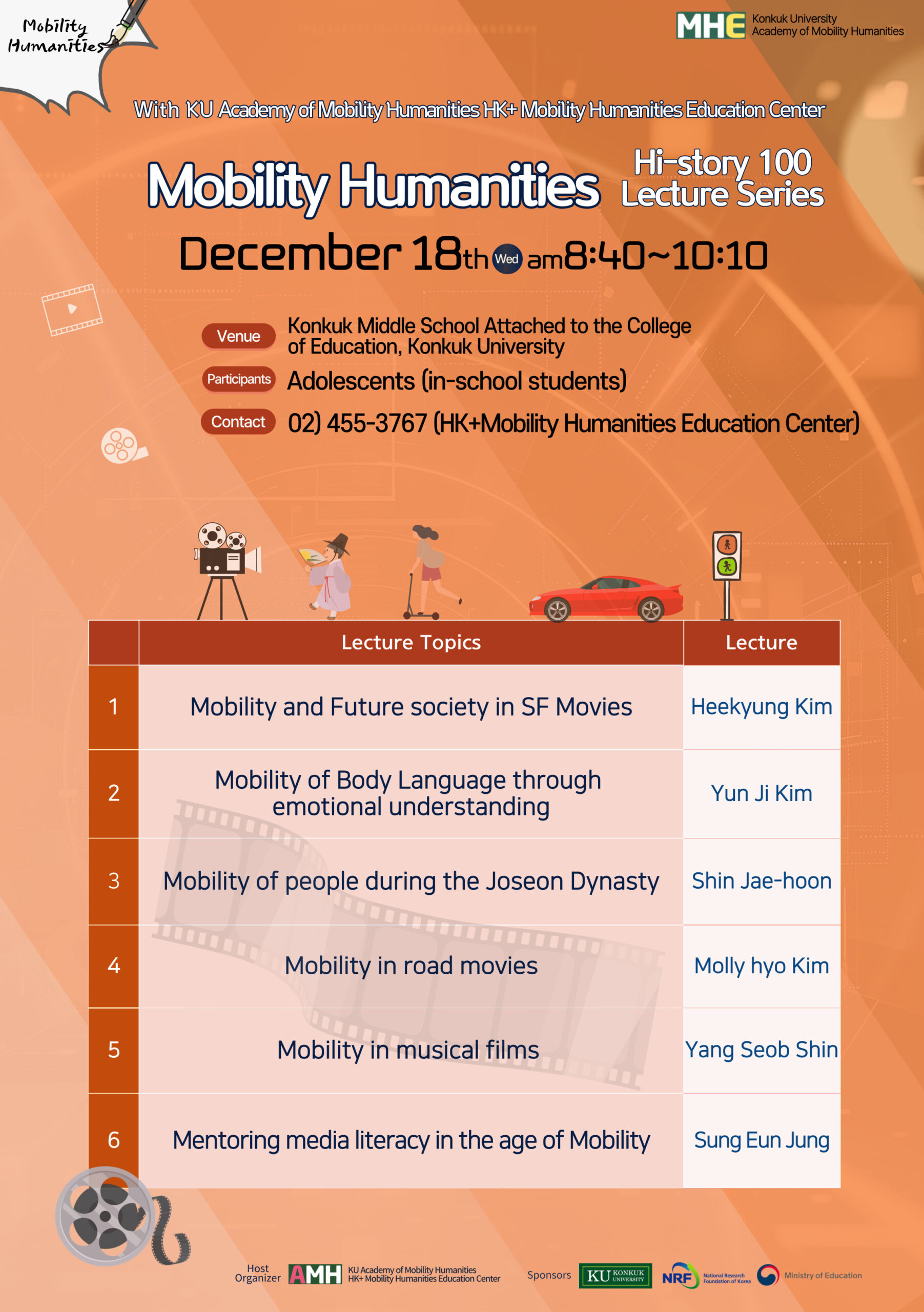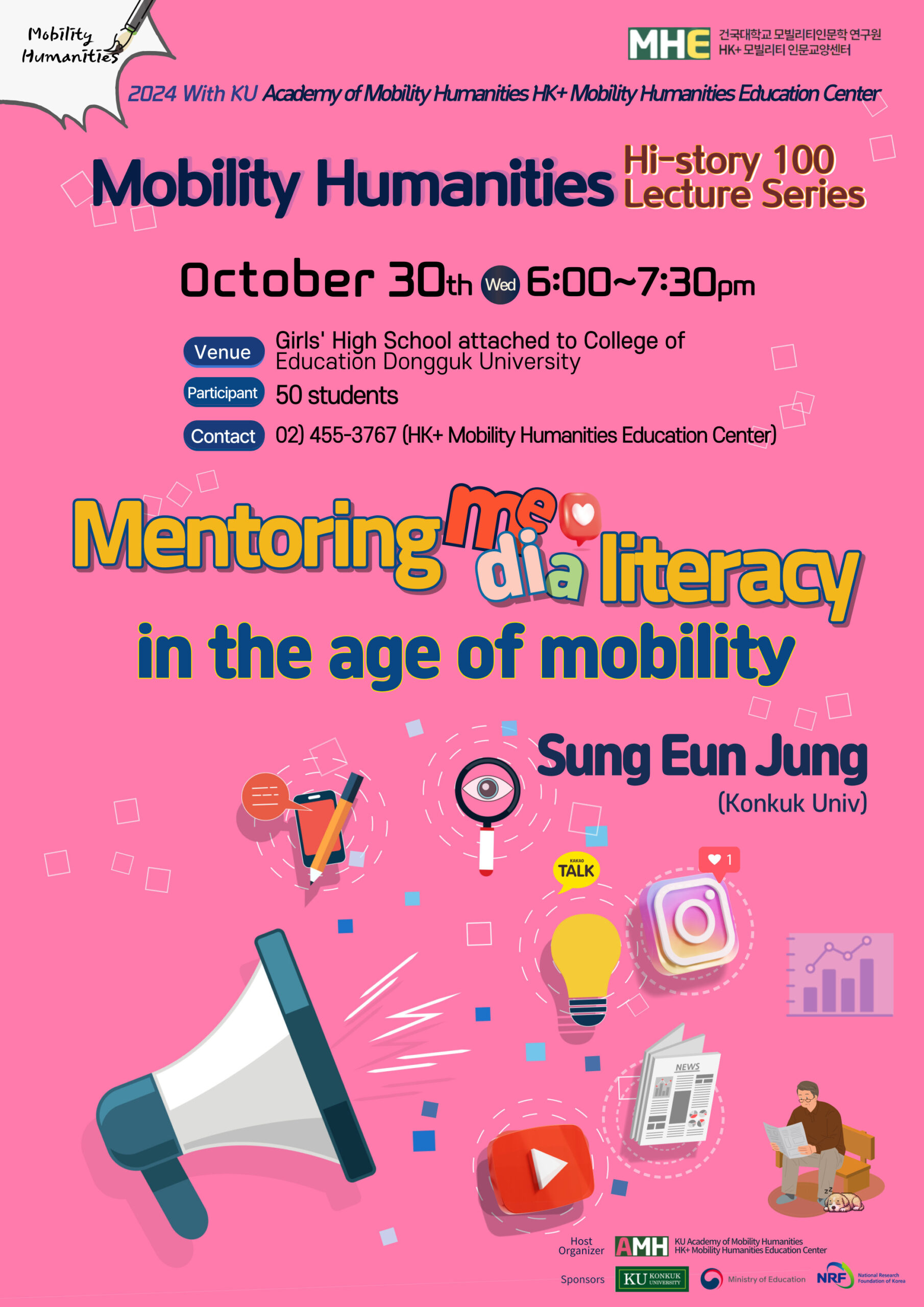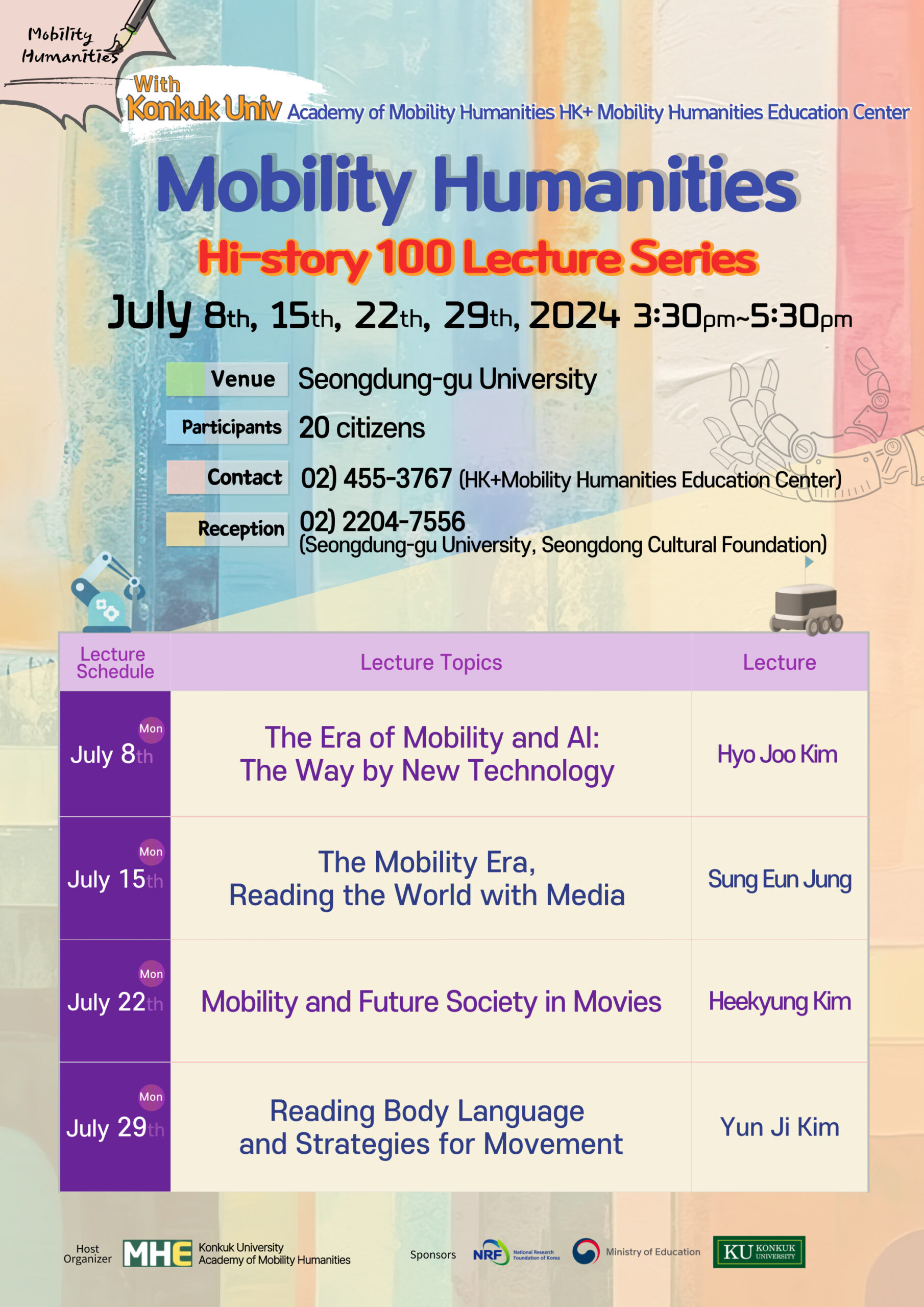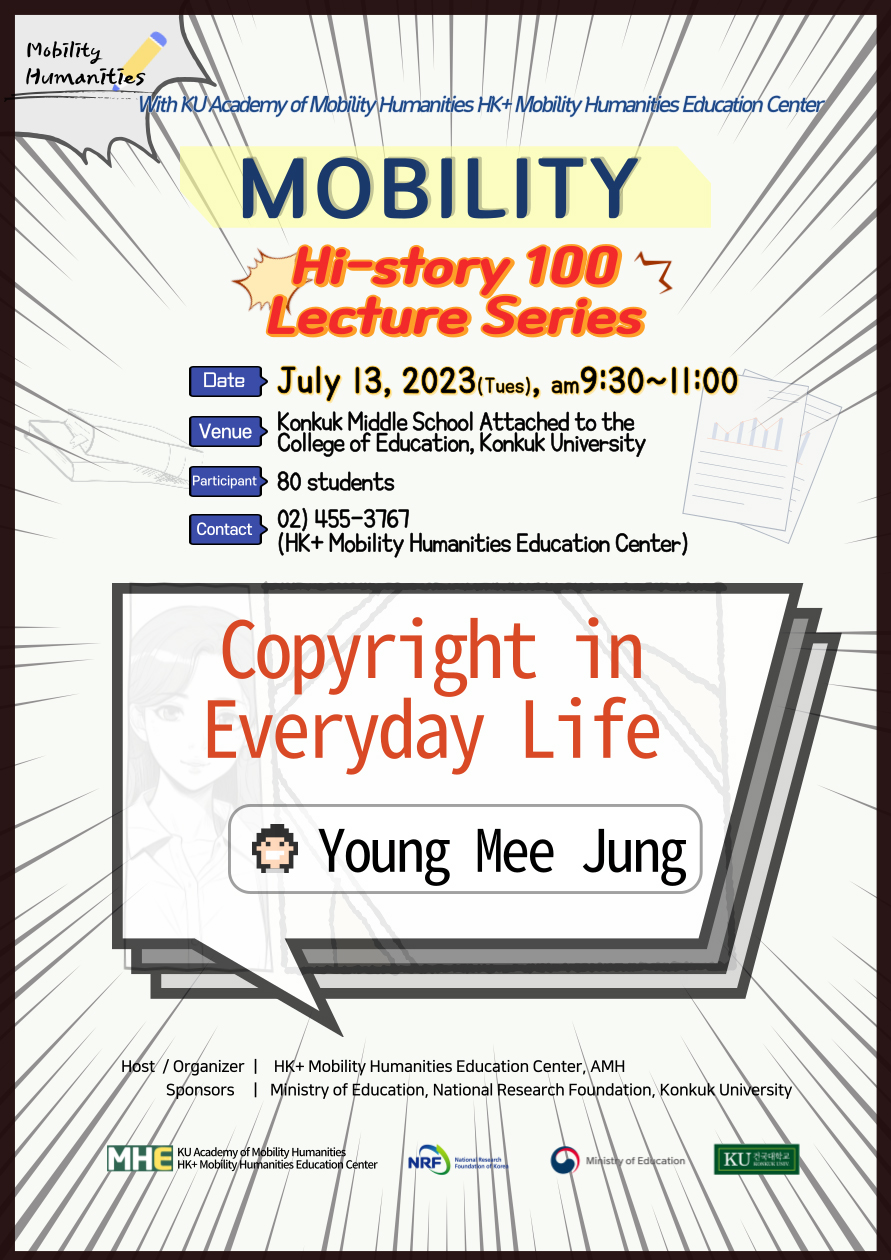- The meaning of digital media literacy
- Media exposure in the era of mobility
- The rise of new media, its popular use, and social change
- The arrival of the mobility era, media exposure in this era, and awareness of its risks
- The story of selective exposure, selective attention, technological rationality, and filter bubbles
- Introduction to the concepts of cognitive dissonance, confirmation bias, and heuristics, with real-world examples
Media
Mobility in Musical Movies
- The meaning of musical movie
- Watching musical movies
- Four seasons mythology by blood type personality
- Modern mythology
- Self-reflective thinking on the human world
Mobility in the Road Movie
- The representation of the desire to move in movies
- The etymology of the term “movie”
- The history of road movies
- The journey of characters in movies
- Exploring the representation of mobility in popular movies through genre conventions
- Differences in the production environments and cultural spheres of road movies in different countries
Mobility and Future Society in SF Film
1. Future Mobility Technology
- The history of autonomous cars in film
- The future autonomous car with autonomous navigation system in Minority Report (2002)
2. Technology Foresight
- Precrime technology in Minority Report (2002)
3. Biometrics
- Fixed biometrics, mobile biometrics, and face-swapping technology in Minority Report (2002)
4. Action Recognition
- Opening and saving data by action recognition in Minority Report (2002)
5. Internet of Things (IoT)
- The concept and role of IoT in everyday life
- IoT in The Island (2006)
6. The Effects of Future Technology
- Panopticon, synopticon, voyeurism, and dystopia
- The pros and cons of future technology
Media Literacy in the Era of Mobility
- What is digital media literacy?
- Q&A on media exposure in the mobility era, with examples such as terminology, photos, graphs, and sentence structure
- Introduction to political communication theories, including the framing effect and priming effect
- The appearance of new media, its popular use, and its impact on social change
- The arrival of the mobility era, media exposure in mobility era, and the awareness of its risks
- Introduction to the concepts of cognitive dissonance, confirmation bias, and heuristics, with real-world examples
- Introduction to news analysis services such as BingKinds
Mobility and Future Society in Film
1. Future Mobility Technology
- The history of autonomous cars in film
- The future autonomous car with autonomous navigation system in Minority Report (2002)
2. Technology Foresight
- Precrime technology in Minority Report (2002)
3. Biometrics
- Fixed biometrics, mobile biometrics, and face-swapping technology in Minority Report (2002)
4. Action Recognition
- Opening and saving data by action recognition in Minority Report (2002)
5. Internet of Things (IoT)
- The concept and role of IoT in everyday life
- IoT in The Island (2006)
6. The Effects of Future Technology
- Panopticon, synopticon, voyeurism, and dystopia
- The pros and cons of future technology
The Era of Mobility, Reading the World with Media
The Importance of Digital Media Literacy in the Era of Mobility
- Literacy issue in MZ generation
- The importance of digital media literacy
- The dangers of framing with numbers and reading articles with polls
- Political communication theory, including spiral of silence, priming effect, and framing effect
- The emergence and public use of new media and social change
- Media exposure and selective attention in the era of mobility
- Algorithms and filter bubbles of mobility media providers
- Efforts for smart media consumption as human, the cognitive miser
- Brief discussion on fake news
- The need for critical reading
- Practice for a critical portal news reading
Copyright in Everyday Life
About the Lecture
- What is the purpose of copyright law?
- Who is protected by copyright law?
- What are the requirements for works to be protected by copyright law?
- Why is there an idea / expression dichotomy in copyright law?
Mobility Media and Wise Way of Reading the World
About the Lecture
This lecture explains media history, media algorithms, and filter bubbles to foster digital literacy in the age of Industry 4.0 mobility.
Science and Netflix
About the Lecture
Find out what mobility is and the background of mobility movies. The lecture examines how to enjoy movies by reviewing the service system and Netflix movie content usage patterns.
Smart Media and Political Life in the Era of Mobility
About the Lecture
- Ice breaking politics! What comes to your mind?
- What is politics in the contemporary?
- Discussions about politics and how they can impact lives.
- Why does democracy matter? An overview of world history about everyone’s right to vote.
- Watch a video about suffrage movement in France, England, and Switzerland, followed by a discussion.
- The importance of digital media literacy.
Mobility Era, Copyright in Everyday Life
About the Lecture
- What is the purpose of copyright law?
- Who is protected by copyright law?
- What are the requirements for works to be protected by copyright law?
- Why is there an idea / expression dichotomy in copyright law?
- Should pictures of monkeys and drawings of dogs be copyrighted?
- Should a simple arrangement of movements in K-pop dance be copyrighted?
- Should the title of the work and its short slogan be copyrighted?
- How can I protect my work?










